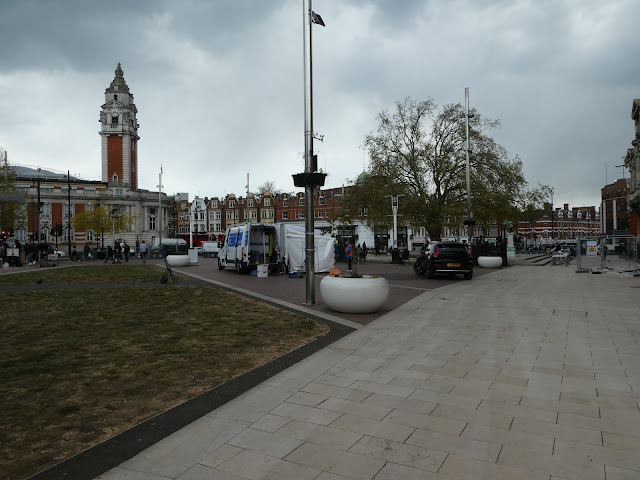Brixton is an interesting area. It was a tiny village of little significance in the early 19th century. However, it expanded rapidly as the 19th century progressed as it became a commuter town for the middle classes, being so close to London. It was a prosperous middle class suburb up until World War II. My elderly neighbours when I first moved to London remembered it as a posh area. But of course by then it had declined appallingly with ghastly estates and rioting by the time I came to London.
But now, following on from the likes of Notting Hill and Islington, it is rapidly gentrifying. You won't notice this in the immediate vicinity of the station, but if you come to areas surrounding Brockwell Park you can see why the middle classes have moved in. That old Victorian middle class housing stock remains and is highly desirable. So it is now taking off again.
Corpus Christi Catholic Church
As you can see it is a pretty huge edifice, but of course the Church of England is not what it once was and the congregation for this vast church has naturally dwindled to negligible size. So it has had to look to other uses, such as being a nightclub.
But what most amused me is that it is also the some time venue for the Torture Garden. If that doesn't mean anything to you, it is apparently Europe's largest fetish club. I just love the thought that people now literally prefer to be tied up and lashed naked with leather whips, than sit through a church service! Surely when it comes to that point you would give up flogging a dead horse wouldn't you? But I understand the Church of England soldiers on...
And the bust of Sir Henry Tate who sponsored the library (and after whom the Tate Gallery is named, it starting with his own art collection).
The Ritzy Cinema, apparently the second oldest picture house in London
So all that surrounds Windrush Square. Given the surroundings it should be another fine London square, but modern planners have contrived somehow to make it one of the bleakest spots around. It seems attractive only to alcoholics and drug users, but maybe one might say there are not enough places made for that particular section of the population. It should be the heart of Brixton, but instead it is just a concrete hole in the middle of it. And I guess Lambeth has spent enough money making it this bad so won't want to spend more undoing it.


























No comments:
Post a Comment